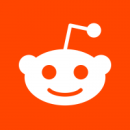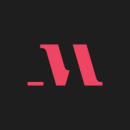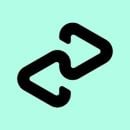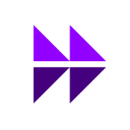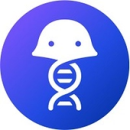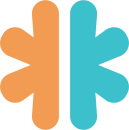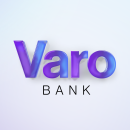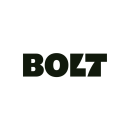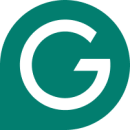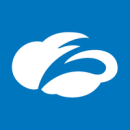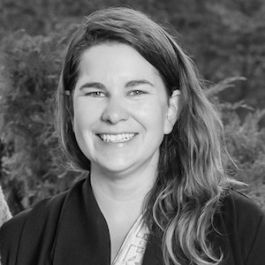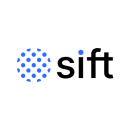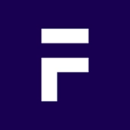A pandemic-proof product may have helped many companies grow throughout 2020, but the following 14 Bay Area firms shared an additional trait in common: the prioritization of employee needs.
AI sales tool provider Gong, for instance, entered 2020 committed to helping employees reach a solid work-life balance. When the coronavirus hit the U.S., that initiative took on a new sense of urgency.
“We introduced nightly ‘End of Day’ Slack messages to remind employees to log off at 5 p.m.,” said Chief People Officer Sandi Kochhar. Gong coupled this ongoing notification with weekly virtual bootcamp workouts during business hours, a partnership with the mental health platform Modern Health, and quarterly, companywide “recharge” days.
Other companies had to work quickly to onboard new hires in a vastly different environment. Discord, the popular real-time communications platform, added new leadership roles designed to cater to the employee experience as it grew its team to more than 400 employees, and Masterclass quickly implemented a remote onboarding plan and buddy system for new hires.
These efforts were by no means the lone factor driving their reported growth — Gong increased revenue 2.3 times at the start of 2021 compared to what it was the year prior; Discord surpassed 150 million users; Masterclass secured $225 million in funding — but they did help to create a space that kept employees engaged while scaling through a pandemic.
Now companies must again think through how to empower employees to sustain this momentum as return-to-office plans are finalized.
If they get it wrong, it could get ugly. Prudential Financial’s Pulse of the American Worker survey predicts that one in four employees are looking for new opportunities as the pandemic settles. That number climbs to 42 percent if a company that offered remote options during the pandemic discontinues that flexibility.
Here’s how Gong, MasterClass, Discord, Reddit and many more of San Francisco’s prime tech companies are devising thoughtful return-to-office strategies that emphasize the employee experience alongside rapid growth.
Company Background: Last year, Reddit updated its remote work policy to give employees — and even entire teams — the flexibility to decide whether they wanted to work entirely remotely, in-office or a blend of the two. The social media giant has offices all over the country, but Lozzi said this embrace of remote work post-pandemic will allow it to tap a deeper well of talent beyond traditional tech hubs.
Company Events Are Changing: Reddit leaned into the last year of remote work, hosting a virtual year-end variety show and a three-day summit for employees within the last 12 months. Lozzi said that her team’s goal for the second half of 2021 is “to build experiences that transcend one medium, but have an outlet for everyone to participate.” This means multifaceted events with online content, in-person events, and conduits for connection with and between remote workers and in-office employees.
What is your plan for returning to the office, and why are you taking that course of action?
“Our CEO, Steve Huffman, likens Reddit to a city. Cities grow, evolve and are impacted by the changing tides of society. Using the metaphor of a city for our office return, we are watching where and how our employees gather to best support their needs and allow for the organic growth of communities to build a space for collaboration and innovation. As needs shift, we want to make sure we evolve with our cities. Reopening our offices will be an opportunity to reintroduce physical space where our employees can be surrounded by those who have a shared purpose, learn from each other and grow as a community. Balancing the remote and in-office model will be an interesting pivot, but like all great cities, people will drive the change.
“In practice, we have two main priorities with our return. Our first priority is to prepare for a hybrid model by physically adjusting our space to introduce new technology to keep us more connected and allow for more collaboration. Our second is to lean into all local guidelines where we have offices to ensure a responsible return.”
The pendulum swung hard over the last year, and things will likely not snap back to the way they were.”
What’s the most important project your team is working on right now?
“With the underlying focus of building a ‘flexible first’ company by creating space for remote and in-office experiences, we are deeply engaged in understanding the future of a hybrid workforce model and how we will continue to evolve. The pendulum swung hard over the last year, and things will likely not snap back to the way they were. So we are being intentional about building a future that takes the best of both worlds. Mixing our best practices from pre-2020, what we learned last year and what we want — knowing what is possible — will all guide us as we navigate our future.”

Company Background: Online education went from a way of learning in 2019 to the way of learning in 2020. And while students across the globe grew tired of most digital edtech platforms, numbers suggest otherwise for MasterClass. The subscription platform — which offers celeb-led workshops covering writing, design, wellness and more — reported spikes in usership by more than 1,000 percent throughout 2020, which teed up the company for its $225 million Series F this past May.
Adjusting Support and Resources: While scaling the headcount to more than 400 last year, MasterClass’s people team acted swiftly with new programming aimed to sustain a culture “where the team feels empowered, appreciated and valued,” Kammann said. Changes included a comprehensive remote onboarding plan, a buddy system, office hours with MasterClass leadership, an employee recognition program and new additions to its employee resource groups (ERGs).
Which teams are you particularly focused on building out this year?
“Having just announced our Series F funding, the team is focused on advancing our strategic initiatives including increased content production, international expansion and the launch of a new enterprise business. To support these initiatives, we are also expanding our presence in Canada with an engineering hub in the Waterloo region. We will hire engineers across the full development stack including web, mobile, native, back end and infrastructure as well as product managers, designers, technical program managers, data scientists and data engineers. The goal is to grow the Canada office to become a peer engineering headquarters to our existing headquarters in San Francisco.”
The team is focused on advancing our strategic initiatives including increased content production, international expansion and the launch of a new enterprise business.”
What are MasterClass’ most important perks and benefits?
“We offer a range of perks and benefits to support our team’s health and wellness, encourage learning and curiosity, and provide an opportunity to give back to the community. Benefits include access to Spring Health, a mental health resource; Origin, a financial wellness offering; no-meeting lunchtime and a $1,500 annual stipend to support employees’ professional development and growth.
“To help facilitate, encourage and support innovation outside of MasterClass, we also created a company donation program that benefits our communities. In addition to making a donation of $250 for each employee to a nonprofit organization that supports Black lives last year, we created a stand-alone donation matching program. This has resulted in more than $130,000 contributed by MasterClass and our team.”
Company Background: In response to millennials’ enduring reluctance toward credit cards, a number of alternative credit models have sprouted over the last decade — and none has been more successful than six-year-old Afterpay. Founded in an entrepreneur’s home office in Sydney, Australia, the company brought its innovative payment platform to the United States in 2018. Once integrated with merchants’ payment portals, the technology splits users’ payments into four installments, with fixed late fees that avoid the exploitative cycle of debt associated with traditional short-term lending.
Embracing Hybrid Work: Starting in the fall, the Afterpay’s Bay Area employees will spend at least two days per week working from downtown San Francisco’s iconic Phelan Building, where the company recently inked a lease on 50,000 square feet of office space.
By some estimates, one in four workers are looking to switch jobs after the pandemic ends. How do you plan to retain and grow your team amid this volatility?
“We have always focused on making Afterpay a great place to work, and we are committed to building on this with our new office location and our flexible workplace model. When selecting our new North American headquarters, we did a diligent review of the entire San Francisco market before settling on the Phelan Building, which has the kinds of tech and creative capabilities to make it a great place to work. The office will feature more than 25 conference rooms, a large space to host companywide meetings and events, a product testing lab, game area, full-service coffee bar, and several open collaboration spaces.
“We’ve also found that Afterpay attracts talent with our clear mission, which is to empower an economy in which everyone wins. Our employees see and feel the impact of their work as more and more people gain financial freedom and retailers grow across the globe.”
Our employees see and feel the impact of their work as more and more people gain financial freedom and retailers grow across the globe.”
What’s the most important project your team is working on right now?
“As we continue on our path to becoming the leader in ‘buy now, pay later,’ our team in North America is focused on three main areas: Providing a true omnichannel payment solution for shoppers; making investments in customer and merchant acquisition in fashion, beauty and lifestyle to accelerate growth; and expanding into new verticals such as home, pets, big box and more.”
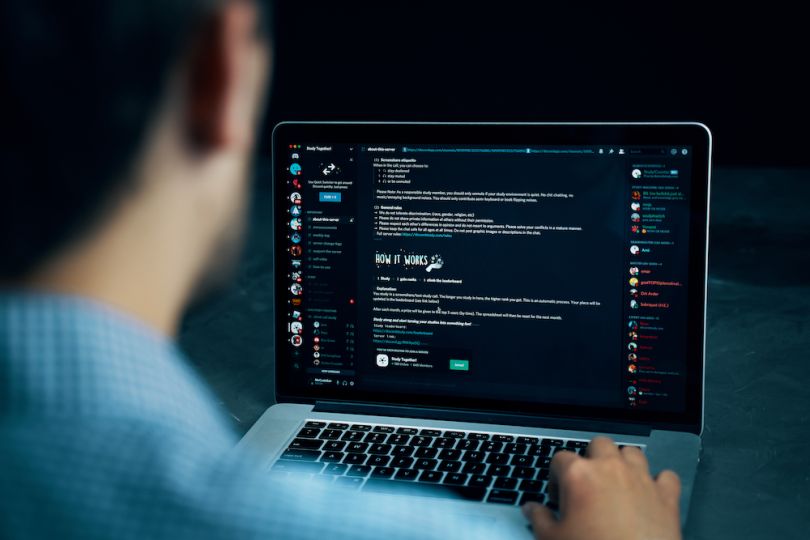
Company Background: From gamers to photography enthusiasts, hikers to foreign language learners, Discord has become a go-to platform to find and build intimate and collaborative communities. Supporting voice, video and text-based communication, the platform currently boasts around 150 million monthly active users and has earned the company a number of acquisition bids, including a reported $10 billion offer from Microsoft.
Innovative Perks: As Discord moves to a flexible work environment — Sullivan said the company will prioritize “results over physical location” — the company is piloting a number of new perks, including a week-long, companywide summer break and one meeting-free day per week. The company also offers up to $20,000 for transgender transition procedures.
By some estimates, one in four workers are looking to switch jobs after the pandemic ends. How do you plan to retain and grow your team amid this volatility?
“Discord has welcomed many employees since the beginning of the pandemic, and we expect to see continued growth. That said, we are very deliberate about the employee experience and have added dedicated leadership roles to emphasize employee connection, learning and development, as well as inclusion, diversity and purpose. It’s not just about us growing — it’s about creating a consistently amazing experience and ensuring our team members feel they are doing interesting work, growing and developing, living our mission, and having fun in the process.”
COVID has taught us that great work doesn’t have to be tied to a physical location.”
What role do you see for remote work in your company’s future?
“COVID has taught us that great work doesn’t have to be tied to a physical location. While we love hanging out together and collaborating, and will continue creating opportunities to do so both online and in person, we’ve learned we can expand our footprint and recruit talented folks beyond a commutable distance from our office. We are focused on creating an inclusive experience where each of us feels connected, has easy access to the information we need, and is provided opportunities to grow and develop — no matter where our desks live. Plus, it doesn’t hurt that our own product is a tool that brings us all together each and every work day.”
Company Background: If you’ve worked with a sales rep within the last 12 months, you’ve likely heard of Gong, which records and ingests sales interactions — emails, videoconferences, phone calls — into its AI and then suggests the next best steps to keep a deal moving. The company’s annual recurring revenue was 2.3 times larger in the first quarter of 2021 than it was the previous year, and it just announced $250 million in funding at a whopping $7.25 billion valuation.
Meeting the Demand: Kochhar said the demand for Gong’s technology “continues to grow at an incredible rate,” with the adoption of hybrid or fully remote business plans by sales teams worldwide making it a “must-have product as the digitization of sales continues.” That means Gong’s own sales team must scale to meet the demand, alongside growth in customer success, product, engineering and marketing.
In your opinion, which pandemic-induced workplace trends are here to stay, and why?
“The first — and likely most obvious — trend is the adjustment to remote-hybrid work, which is absolutely here to stay. I’m sure HR leaders around the globe would agree that the transition to remote work has been a silver lining to the pandemic. Not being tethered to San Francisco has allowed our recruiters to find incredible talent outside of the Bay Area.
“One more subtle trend is the greater emphasis on work-life balance. The pandemic forced many employees to fine-tune their project management skills so they could juggle additional non-work responsibilities. Pre-pandemic, Gong was committed to helping employees achieve great work-life balance. In 2020 we introduced a variety of new initiatives, like a nightly 'End Of Day' Slack message reminding employees to log off starting at 5 p.m., or weekly virtual bootcamp workouts during business hours to encourage taking breaks throughout the day to prioritize health and wellness. We also partner with Modern Health, a mental health platform that provides employees access to a full spectrum of resources, ranging from digital courses and meditation sessions to a network of certified coaches and licensed therapists. It’s been inspiring to see colleagues encourage and motivate each other to commit to improving both their personal and professional lives.”
As the world continues to change and evolve, so do our benefits and programs.”
What are your company’s most important perks and benefits?
“That depends on who you ask! A new parent might tell you the most important benefit is our parental leave, whereas someone else might enjoy the generous flexible time-off plan and quarterly re-charge days, where the company closes at the start of each quarter to allow employees to take much-deserved time off.
“We also have a growing list of perks and programs, including an educational stipend, fun cultural events (we just had a lunchtime magic show) and a work-from-home stipend. As the world continues to change and evolve, so do our benefits and programs.”

Company Background: Recently named one of Forbes 50 “most promising AI companies,” Moveworks’ chatbot supports employees at companies such as DocuSign, Slack and Stitch Fix. The bot launched in 2016 to address IT issues and expanded its services to HR, facilities and finance functions this past March.
Ladder Up: As Moveworks looks to build the next generation of its core platform, the company will be expanding its machine learning and product teams. New engineers and data scientists can also expect to see defined career ladders and leveling matrices, led by Madhany, so that “Movesters know exactly what it takes to progress.”
What is Moveworks’ plan for returning to the office?
“We’re planning a soft reopening of our office in June and will recommend returning to the office after Labor Day in September. We believe that employees need total visibility over the business to be successful. That means giving them the context they need to make the best decisions, from our financial performance to our product roadmap to all of our policies, current and potential. That’s why we’re practicing full transparency and over-communicating to employees so they stay informed and prepared. For instance, we’re utilizing self-service tools like M8, our own Moveworks bot, to deliver instant, personalized updates on our return-to-work plan.”
Every Movester is treated as an owner and a leader, and no one works in silos.”
How do you plan to retain and grow your team amid predicted workforce volatility?
“At Moveworks, we’re fundamentally transforming how employees get help at work. Creating this entirely new category of employee service requires ‘Movesters,’ what we call our team members, to own their roles and develop their playbook for success. We’re a group of very different people who share the same vision. Beyond that shared vision, what binds us together is the culture of collaborative ownership. That means every Movester is treated as an owner and a leader, and no one works in silos. Every team collaborates closely with one another to strive for our vision: gauging demand from customers, developing the right features, prioritizing goals and figuring out what works.”
Company Background: Scientists and researchers deserve technical upgrades, too. That’s the thought behind Benchling’s cloud-based life sciences research and development platform. Its applications, which include automated data capture and collaborative workflows, are helping more than 300,000 scientists and 1,000 R&D organizations from around the world manage massive experimental datasets to solve challenges surrounding diseases, renewable energy and more. Investors have taken note, putting up $200 million in funding this past April to help Benchling deepen its global footprint.
Adding Functionalities: As Benchling continues to add hires across every department, the company is expanding the range of emerging therapeutic types that its platform can natively support. Other projects include new functionalities to support the end-to-end R&D process, like development phases that follow research and discovery, as well as an automated health scoring framework to help customer-facing teams determine churn risks and identify opportunities.
How do you plan to retain and grow your team amid predicted workforce volatility?
“What’s important is to think about the entire employee experience beyond the job itself and making sure Benchling is a place they want to stay. We have maintained a focus on the employee experience throughout the pandemic and kept an open dialogue about what our employees need to stay healthy and happy. We’ve learned what our employees place a lot of value on and have introduced new benefits including flexible work options, companywide mental health and wellness days, education stipends to promote personal development, and extended parental leave.
“We’ve placed a lot of emphasis on ensuring our managers are well trained and can identify signs of employee burnout, that they encourage their teams to take time off and unplug, and are able to provide a safe space for employees to talk openly about how they’re doing and what they may need help with.”
We recognize that people with really great skill sets might not always be located right in our region.”
What role do you see for remote work in Benchling’s future?
“We’re dedicated to supporting three different models of employee work. For our employees who live near our main offices, we’re going to provide them with a truly phenomenal office experience with some additional flexibility. For those who might be in one of our regional or satellite hubs, we want to enable them to create a sort of community where they can co-work while being remote from one of our main office locations. We are also supporting fully remote employees now. We originally only hired remote positions in sales but we have expanded remote hiring to other teams. We recognize that people with really great skill sets might not always be located right in our region and we want to enable ourselves to hire fantastic people with a diverse set of perspectives and abilities, regardless of their proximity.”

Company Background: The number of people reporting struggles with mental health is up. Likewise, so is the number of mental health and self-help applications to support them, which one expert estimated to be between 10,000 and 20,000. Most of these apps target mass consumers; Mindstrong, however, is one of the few that uses innovative tech to link individuals experiencing mental health conditions with therapy and psychiatry services. After raising $100 million last spring, the company remains committed to solving challenges within the mental health sector.
On the Horizon: Wagner said Mindstrong’s product, design and engineering teams are “always growing.” As more members join the platform, the company will also look to add therapists, nurse practitioners and psychiatrists.
What are the most important projects your team is working on right now?
“The two that come to mind immediately are around growth and how we can use technology to improve mental healthcare. We’re looking at how we can grow in a way that allows us to serve more patients and members with mental illnesses. How do we do so safely and responsibly? What populations are best suited for telehealthcare? From a technical perspective, behavioral healthcare is hard to measure, both for patients and providers. We’re working on innovative ways to surface insights to both groups, such as leveraging insights learned from passively collected and actively collected data as patients progress through their treatment plans. Making sense of a lot of data is an awesome challenge, and using information to provide high quality care right when it’s needed is incredibly fulfilling for our teams.”
Remote work is here to stay at Mindstrong.”
What role do you see for remote work in Mindstrong’s future?
“Remote work is here to stay at Mindstrong. Our clinicians are spread out across the country, so they will always remain remote as they deliver high quality telehealthcare to our members. For others in the company who may live near an office, we’re happy to welcome them back on flexible schedules and as needed by their teams.”
Company Background: Last July, Varo made history among U.S. online banks when it became the first one to receive a national banking charter from the Office of the Comptroller of the Currency. Since then, the fintech platform has expanded its services — small-dollar lending, credit building and a philanthropic effort to help people build their emergency savings — to also include debit card rewards.
In 2021: To serve its climbing list of enrolled customers, Varo is hiring in nearly all areas, but particularly in engineering, product, data science, design, marketing, operations, risk and compliance, people, legal, and finance. While scaling the organization is the top priority at the moment, O’Neal said the team is also busy designing its “Future of Work” programs.
How do you plan to retain and grow your team amid predicted workforce volatility?
“We will continue to prioritize employee safety and well-being and use these to guide our decisions as we shape our return-to-office plans to ensure that our employees are fully committed during this period of volatility. What distinguishes Varo as a great employer is our mission and our open and authentic culture. We are working every day to improve the lives of millions of Americans through technology and innovation. Varo prides itself on being diverse, customer-obsessed, impact-driven, collaborative, respectful and creative.
“For most roles, we will maintain a hybrid approach to allow employees to continue to benefit from the flexibility of working from home. We also offer great benefits that include comprehensive EAP with mental health support, team building events, unlimited PTO and quarterly paid volunteer days.”
We’re not taking a one-size-fits-all approach.”
What role do you see for remote work in Varo’s future?
“Flexibility toward remote work is here to stay for the immediate future. We know there is a clear upside to being able to collaborate within teams and cross-functionally in a communal office setting, and we will continue to support that opportunity while offering location flexibility. We’re not taking a one-size-fits-all approach. For example, while securing our new offices in San Francisco during the pandemic, we purposefully sought additional conference room and open collaboration space rather than desk space.”

Company Background: For online shoppers visiting retailers like Forever21, Badgley Mischka and Polywood, Bolt offers one-click checkout processes. The company, which has expanded to more than 150 employees across its San Francisco headquarters and NYC office, launched in 2014. In May, Bolt released a single-sign-on checkout experience that gives shoppers one login to check out from any of the brands within the Bolt network.
Open-sourcing Cultural Guidelines: Bolt recently introduced an initiative called its “Conscious Culture Playbook,” which opens Bolt’s cultural guidelines for others to use however they see fit. “Anyone — whether you’re an entrepreneur, head of HR or lifelong learner — can learn the best practices for building a mindful, thriving, yet execution-driven workplace,” said Levinsohn.
What were some of Bolt’s most important perks and benefits that emerged from 2020?
“When it came to benefits, we prioritized well-being and making it easier for teammates to work from home with efforts such as expanded leave and more robust mental and physical health support offerings. We added monetary support and various stipends, increased virtual cultural and community events, and added training and development opportunities for our teammates. We also upped everyday efforts to help teams feel connected, understand where to go for help and support, and make sure we’re supporting their boundaries around working hours.”
For those who love this new remote way of working, they’re going to want to keep looking for companies that have adjusted to this new virtual way of work.”
Which pandemic-induced workplace trends are here to stay?
“Companies that are able to have a remote workforce will continue to do so. A significant share of employees appreciate the freedom and self-determination that this year gave us. We learned that we can work effectively with teammates regardless of location or office setting, which opened up our hiring throughout North America. I also know many teammates who have chosen to relocate during the pandemic, or have plans to do so in the future. For those who love this new remote way of working, they’re going to want to keep looking for companies that have adjusted to this new virtual way of work.”
Company Background: Thirty million people and some 30,000 teams use Grammarly’s digital writing assistant, which employs natural language processing and deep learning to check spelling, grammar and offer writing suggestions in real time. In March the company brought its “tone detector” technology — software that helps writers ensure they’re conveying the right message via text, originally rolled out as a browser extension in 2019 — to mobile devices via the Grammarly Keyboard.
Running on NLP: Grammarly is currently hiring across all functions, with a specific emphasis on engineers with machine learning and natural language processing experience. They’re also looking for senior front-end, back-end and full-stack engineers to contribute to the design and scale of the company’s enterprise product.
What is your plan for returning to the office, and why are you taking that course of action?
“Grammarly is moving to a remote-first hybrid model. The product we are creating is designed to facilitate a future of communication and work that embraces more asynchronous collaboration among a diverse and global community. We are building a workplace that welcomes and resembles this future — and empathizes even more with the users we serve.
“This means that our modes of collaboration will assume every team member is remote. We believe this will help us build an equitable workplace that ensures transparency and equal opportunity for each Grammarlian to learn, grow and have the highest impact. By ‘hybrid,’ we mean that synchronous and in-person communication helps build trusting relationships and a welcoming, supportive culture that fuels innovation. So we’ve designed synchronous communication and in-person time into our working model. For example, teams will gather in person for two to four weeks per quarter to optimize for both in-person trust-building and collaboration. Our current offices in Kyiv, San Francisco, New York and Vancouver will turn into hubs that may be used by individuals as well, if they prefer to work from there.”
We’ve focused on benefits that help empower our team members to do their best work at home, stay connected with their colleagues beyond their work and feel cared for by the Grammarly organization.”
What are your company’s most important perks and benefits?
“Aside from offering comprehensive healthcare plans and a generous paid time off and sick leave policy, we also offer benefits that specifically address a remote-work environment. We’ve focused on benefits that help empower our team members to do their best work at home, stay connected with their colleagues beyond their work and feel cared for by the Grammarly organization. We offer a home office set-up stipend, a learning and development budget, a fitness stipend and virtual team workout classes, team virtual event budgets, and regular Grammarly-hosted team events and frequent care packages for our team and their families.”

Company background: Zscaler makes cloud-delivered information security technology for the world’s biggest organizations, protecting internet traffic and allowing employees to securely access their applications and data no matter where they’re working or where the apps are hosted.
A Place for Professional Growth: Bouwkamp’s team has spent the pandemic building new professional development resources, including programs designed to foster leadership skills. It’s all part of a larger project aimed at creating a “seamless, consumer-like employee experience” for a workforce distributed all over the world.
In your opinion, which pandemic-induced workplace trends are here to stay, and why?
“The pandemic posed several challenges to the way we were accustomed to working. As a rapidly growing organization, one challenge we felt acutely at Zscaler was the inability to bring people physically together for shared learning and growth experiences. While we were once able to host in-person coaching and feedback sessions, we now need to lean into the virtual world. That means depending on just what our technology enables: safe connection and productivity anywhere at any time.
“Pre-pandemic it was not uncommon for an organization to split their development offerings between 80 percent in-person and 20 percent virtual. We flipped that script. We built a program we called ‘Leading at Z,’ which ensures our aspiring and senior leaders understand what is expected of them, receive feedback to understand where they are in relation to our expectations and have access to curated development content that aligns with where they are on their leadership journeys. We’re now launching the programs that enable engagement across the leadership community so that we can learn and grow together, without having to be in the same physical space. Based on the success of this program, we’ve just kicked off Succeeding at Z, which will apply our Leading at Z learnings to ensure all Zscalers are enabled to succeed.”
We want people to feel supported to identify their professional ambitions and then make them a reality over time.”
By some estimates, one in four workers are looking to switch jobs after the pandemic ends. How do you plan to retain and grow your team amid this volatility?
“Our plan right now is to get back to basics, but with a bit of a Zscaler twist. We know, for example, that growth and development are key drivers of employee engagement and retention. We believe that our investment in Leading at Z and our upcoming launch of Succeeding at Z will help to foster the type of employee experience in which people can thrive. We want people to feel supported to identify their professional ambitions and then make them a reality over time, with an appropriate amount of hard work.”
Company Background: On proptech sites like Airbnb and Zillow, fraudulent posts are unfortunately all too common as bad actors phish for victims to funnel deposits through fake listings. Sift, now hiring in all departments — and especially engineering — remains steadfast in its goal to eradicate fraud through its digital trust and safety platform, powered by machine learning and a digital library of tens of thousands of fraud signals.
Building Belonging: To help ensure that “Sifties” have a safe and welcoming environment to converse and connect with one another, the company launched internal communities that include Women@Sift, LGBsifTs and JEDI, which stands for Justice Equity Diversity Integration and is focused on closing the gap in representation and equity at Sift.
Which pandemic-induced workplace trends are here to stay?
“The pandemic increased awareness of burnout and the importance of mental health, balance and self-care across the board. At Sift, we have three types of investments to support mental wellness: time off, Zoom-free blocks and wellness benefits. We added five extra mental health days to the holiday calendar globally so Sifties get a minimum of one day off per month. A consistent theme we heard was that people were struggling with Zoom fatigue, so we have a ‘Deep Work Wednesday’ block where we avoid meetings. We also have a suite of wellness benefits, from a $100-per-month stipend to free access to services like Ginger.io, Headspace, Physera and Aaptiv.
“I also think some form of distributed work is here to stay on a much broader scale than we experienced pre-pandemic. The flexibility that distributed work offers for both employees and hiring managers can be a significant advantage. We have always strived to empower our teams to make great decisions for the business, and now we’re extending that mindset to empowering people to decide where and how they work. There will be new cultural challenges created as we focus on collaboration, equity, access to leadership and team bonding. We are eager to design around these challenges as it will ultimately create a more flexible, agile organization in the long run.”
We have always strived to empower our teams to make great decisions for the business, and now we’re extending that mindset to empowering people to decide where and how they work.”
What role do you see for remote work in Sift’s future?
“Flexibility will be key. Employees will be able to work completely from the office, from home or some combination of the two. We may encourage team schedules to allow for more intentional collaboration, but we will make those decisions based on the timeline of the pandemic and reopening in our various office locations.”

Company Background: Fresh off a $200 million Series D and a $3.2 billion valuation, Figure is uprooting the financial services industry by using blockchain technology to reimagine loan origination, equity management and private fund services. The three-year-old company was founded by Mike Cagney, the same guy who started the personal finance platform SoFi.
Retention Strategy: Figure used part of 2020 to design and implement defined career paths for its customer operations and engineering teams. “We have a 17 percent internal promotion rate so far in 2021, and that will continue to grow as we scale,” Day said. Additionally, Figure introduced a lightweight performance management system that includes a reward program with quarterly bonus opportunities and semi-annual compensation reviews. Employees can then elect to receive their quarterly bonus as cash or a fully vested equity grant.
Which pandemic-induced workplace trends are here to stay?
“Flexibility, adaptability and resilience are here to stay. Companies that embrace the notion that, regardless of what unexpected circumstances come their way, an engaged workforce that has the autonomy to be flexible will adapt to less-than-ideal situations and thrive. We’ve proven we can foster inclusive and collaborative environments in a remote setting by adapting our communication styles and leveraging technology. Parents and caretakers have proven they can juggle more than they ever thought possible when provided flexibility.”
Flexibility, adaptability and resilience are here to stay.”
Which teams are you particularly focused on building out, and what’s the most important project Figure is working on currently?
“Our engineering team is growing significantly to build and support our disruptive blockchain technology. As far as projects, our teams are working on several high-priority ones, including the launch of Figure Pay, which will allow users to start transacting quickly and earn access to credit. Figure Pay has launched in Missoula, Montana, and will continue to spread across the rest of the U.S.”



